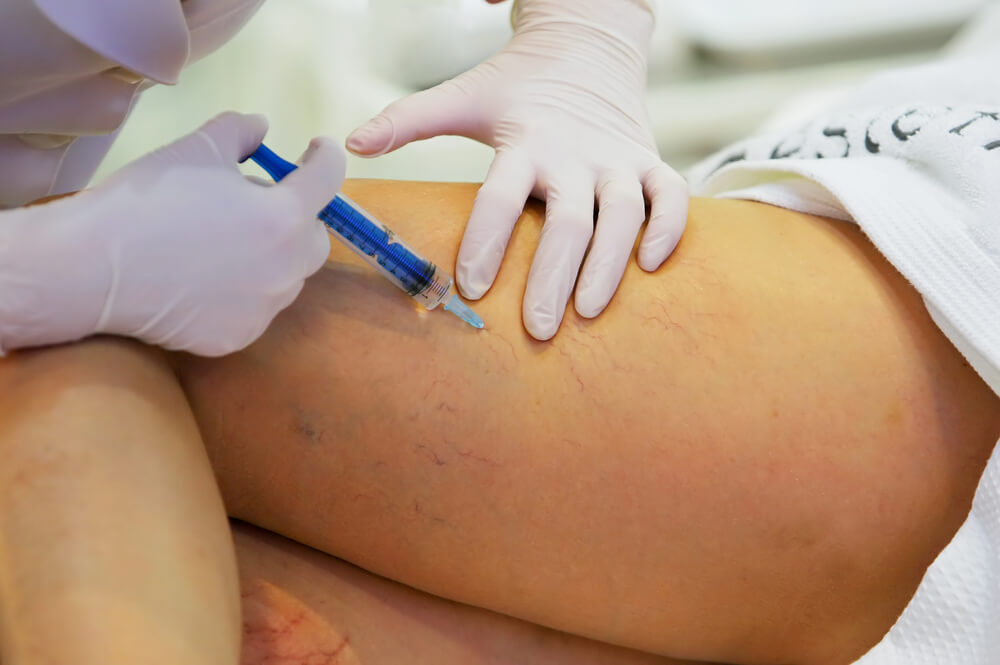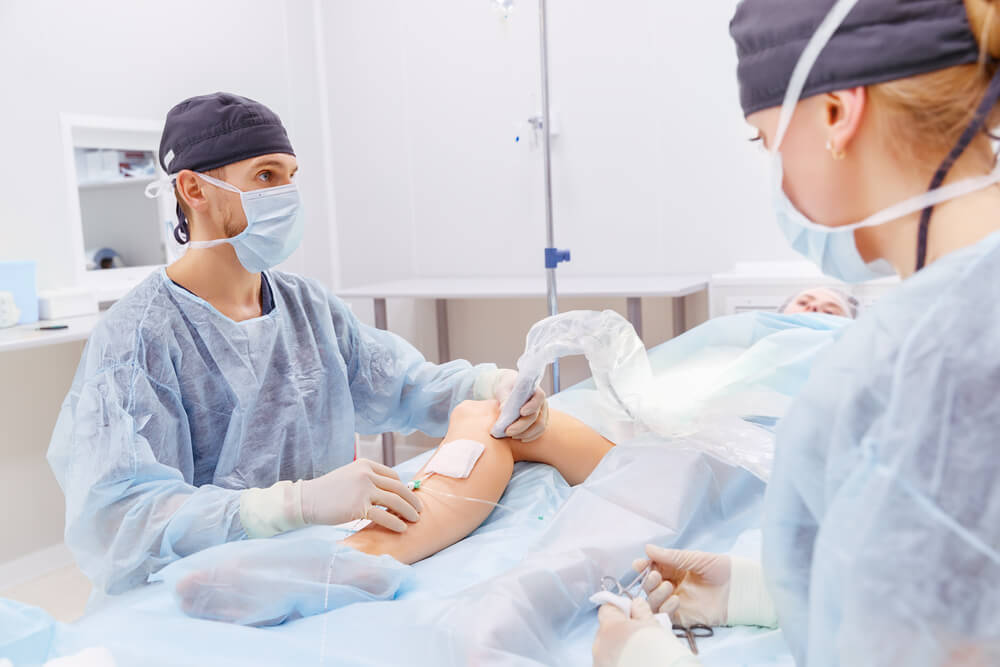Microphlebectomy
Microphlebectomy
Living with varicose veins can be more than just a cosmetic frustration. The heaviness in your legs, the swelling at the end of the day, or the painful throbbing that interrupts your routine can affect both comfort and confidence. Left untreated, these enlarged veins may progress and cause complications.
Microphlebectomy—also called ambulatory phlebectomy or stab phlebectomy—is a minimally invasive surgical procedure designed to remove varicose veins safely with little downtime and excellent results.
What is Microphlebectomy?
A microphlebectomy procedure is a minimally invasive technique typically performed on an outpatient basis in a doctor’s office. No operating room required. Through a series of tiny incisions in the skin, your doctor uses a fine hook to extract and remove sections of the diseased varicose vein.
Unlike traditional surgery, which requires larger cuts and general anesthesia, this microphlebectomy procedure focuses only on the surface veins, leaving healthy veins and surrounding tissue intact.
Microphlebectomy has a high success rate of more than 90 percent. More than 98% of people experience no varicose vein recurrence one year after the procedure.
Why You Might Need Microphlebectomy
Your doctor may recommend microphlebectomy if you have:
- Large varicose veins that are bulging, twisted, or painful
- Symptoms such as aching, itching, or burning along a vein
- Skin discoloration, irritation, or swelling caused by poor circulation
- Recurrent bleeding or complications such as superficial blood clots
- Visible surface veins that don’t respond to other techniques like foam sclerotherapy or radiofrequency ablation
Some people pursue treatment for cosmetic reasons, while others choose it to restore comfort and mobility. Either way, patients enjoy symptom relief and improved appearance.
Risks and Potential Complications
When performed by an experienced doctor, ambulatory phlebectomy is highly safe. Still, every surgical procedure carries some risk. Possible complications may include:
- Temporary bruising, swelling, or bleeding around the incisions
- Mild discomfort or tenderness along the treated leg
- Numbness or tingling where the veins were removed
- Minor skin discoloration that usually fades within weeks
- Rare infection or delayed healing of an incision
At Nelson Vein Treatment Center, we carefully plan each procedure to minimize complications and provide the best possible patient experience.
Preparing for the Procedure
Before your microphlebectomy procedure, your doctor will:
- Review your medical history, medications, and bleeding risks.
- Map the diseased veins with ultrasound to precisely determine which need removal.
- Explain how to prepare, including any changes to blood-thinning medications.
- Provide instructions on activity, fasting, or compression therapy beforehand.
Since the procedure is performed with local anesthesia, you may feel numb in the treated area. You should arrange for someone to drive you home after the procedure.
What Happens During Microphlebectomy
Before the Procedure
- You’ll change into a gown and lie on the operating room table or doctor’s office treatment bed.
- The targeted vein will be cleaned and numbed with a local anesthetic.
- The doctor will carefully mark the varicose veins to guide incisions.
During the Procedure
- Several small incisions are made along the affected veins.
- A surgical hook is inserted, and the diseased varicose vein is gently extracted in sections.
- The area is dressed with steri strips and bandages.
The incisions are so small that they rarely require stitches or sutures. The entire procedure typically takes under an hour with little downtime.
After the Procedure
- You’ll walk immediately to promote circulation.
- Most patients return to normal activities the same or the next day.
- Strenuous exercise should be avoided for 1–2 weeks.
- Prescription compression stockings or bandages help support healing and prevent blood clots.
Recovery and At-Home Care
Recovery from microphlebectomy is usually quick. You should follow your doctor’s instructions for wound care and activity. Here’s what to expect:
- Mild swelling, redness, or bruising may occur but improve within two weeks.
- Incisions are barely visible after several weeks to months.
- Most people report less pain than with traditional surgery and a rapid return to normal activities.
- Elevate your legs when resting and take short walks daily to encourage blood flow.
Next Steps and Follow-Up
Your doctor may schedule a follow-up ultrasound to confirm the successful removal of the diseased veins. Additional treatments such as endovenous laser ablation or sclerotherapy may be recommended in conjunction with microphlebectomy for smaller surface veins.
Call your provider immediately if you notice:
- Severe pain, worsening swelling, or persistent bleeding
- Signs of infection at an incision site
- Sudden leg swelling, chest pain, or shortness of breath (possible blood clots)
Why Choose Nelson Vein Treatment Center?
At Nelson Vein Treatment Center, no one can take better care of you than we can. Dr. Dvora Nelson, a board-certified surgeon with expertise in minimally invasive techniques like ambulatory phlebectomy, takes the time to educate you and your family, answer questions, and ensure your comfort at every step. We perform our advanced procedures in a relaxed outpatient setting with a focus on education, safety, and empowerment.
Ready to finally get rid of painful, bulging varicose veins? Schedule your consultation today at Nelson Vein Treatment Center to take the first step toward relief.

Schedule Your Consultation
To request a Micro Phlebectomy consultation, fill out the form below or call us at 440-617-6061.



